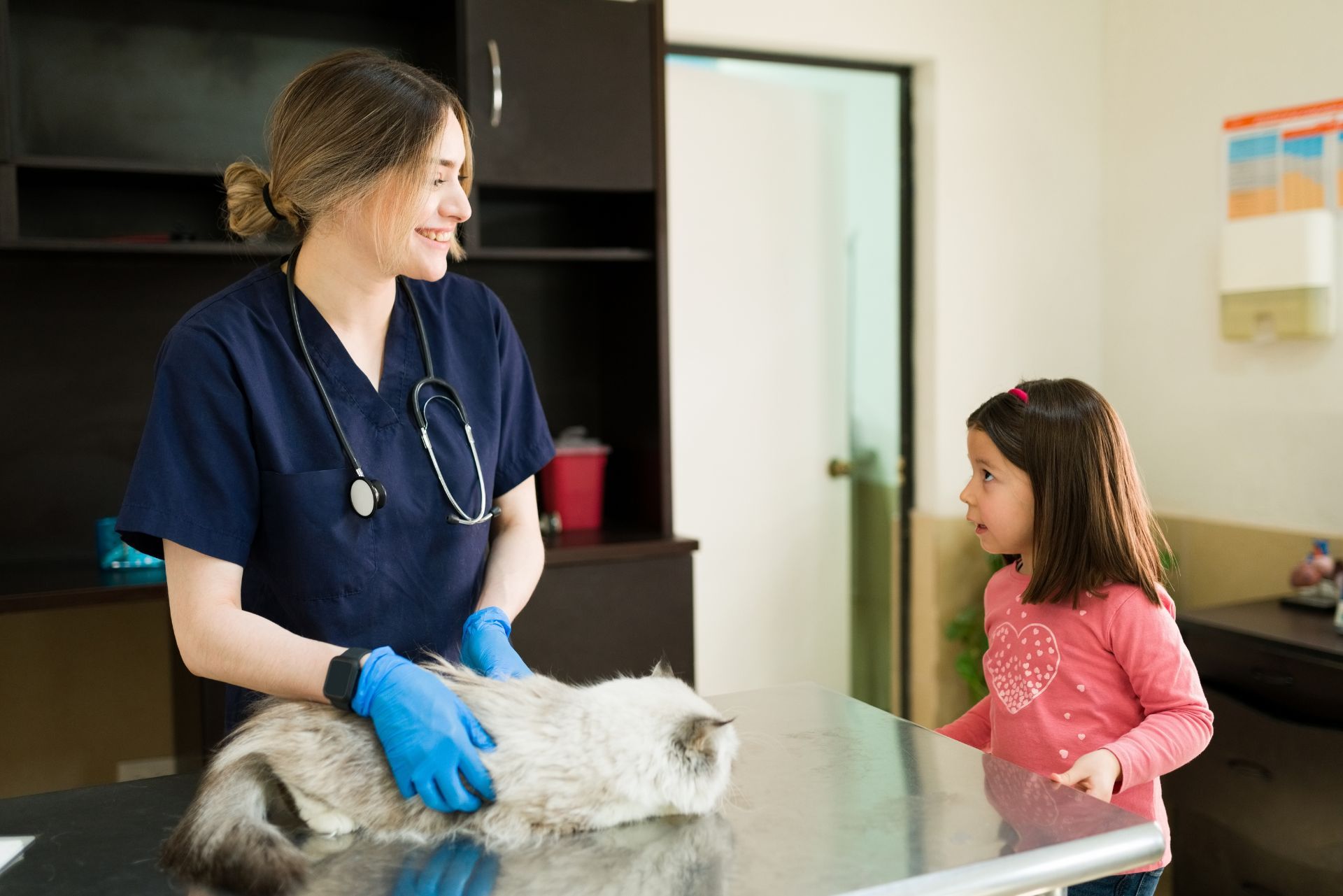California Veterinary Clinic Insurance

9:00am - 6:00pm Mon-Fri
Will Reply in 15min*
Index
Understanding the Rising Costs in Veterinary Care
Key Insurance Coverages for Veterinary Clinics
Impact of Pet Insurance Trends on Veterinary Practices
Recent Regulatory Changes Affecting Insurance Rates in California
Strategies to Manage Insurance Costs and Risks
How Insurance Supports Veterinary Teams and Patient Care
Pet Insurance Premiums and What They Mean for Your Clinic
Wrapping Things Up: Protecting Your Veterinary Clinic in California
Running a veterinary clinic in California means navigating a complex landscape of risks, rising costs, and evolving client expectations. With veterinary care prices soaring by 60% over the last decade, practice owners face increasing financial pressures that make comprehensive insurance coverage more crucial than ever. This guide breaks down key insurance considerations for veterinary clinics in California, helping practice owners protect their business, staff, and patients while managing costs effectively.
Understanding the Rising Costs in Veterinary Care
California veterinary clinics are feeling the pinch from multiple angles. The Bureau of Labor Statistics reports a 60% increase in veterinary care prices over the past ten years. This surge is driven partly by a national shortage of veterinarians, which Srimukh Oddiraju, CEO of Fletch, highlights as a major factor pushing up medical care costs for pets. When demand outpaces supply, clinics often face higher operational expenses, which can translate into increased premiums and out-of-pocket costs.
Pet insurance premiums themselves have followed this upward trend. On average, pet owners in the U.S. pay about $590 annually for cat insurance and $670 for dog insurance, according to the latest ZipDo Education Reports 2025. These premiums reflect the growing complexity and cost of veterinary treatments, which clinics must factor into their risk management strategies.
For practice owners, this means insurance policies need to be carefully tailored to cover not just routine risks but also the financial impact of these escalating costs. Understanding how these market forces affect insurance premiums is essential for making informed decisions.
Moreover, the rise in pet ownership during the pandemic has further complicated this landscape. With more families welcoming pets into their homes, the demand for veterinary services has surged, leading to longer wait times and increased pressure on existing veterinary staff. This influx of new pet owners often leads to a greater need for preventative care, vaccinations, and emergency services, all of which contribute to the overall increase in veterinary expenses. As a result, clinics are not only grappling with the costs of care but also the challenge of managing a growing clientele while maintaining quality service.
Additionally, advancements in veterinary medicine have introduced new technologies and treatment options that, while beneficial, also come with higher price tags. From advanced imaging techniques like MRIs to specialized surgical procedures, these innovations can significantly enhance the quality of care but also raise the costs associated with providing such services. As veterinary clinics strive to keep pace with these advancements, they must balance the need for cutting-edge care with the financial realities faced by pet owners, making it imperative for both parties to engage in open discussions about the value and necessity of various treatments.

Key Insurance Coverages for Veterinary Clinics
Veterinary clinics face unique risks that require specialized insurance solutions. Here are the core coverages every California practice owner should consider:
Professional Liability Insurance
This is the cornerstone of any veterinary clinic’s insurance portfolio. It protects against claims of malpractice, errors, or omissions in the care provided to animals. Given the complexity of veterinary medicine, even a small mistake can lead to costly lawsuits. Having robust professional liability coverage ensures your clinic can handle legal defense costs and settlements without jeopardizing financial stability. Moreover, as veterinary medicine continues to evolve with advanced treatments and technologies, the potential for claims may increase, making this coverage even more essential for safeguarding your practice’s reputation and financial health.
General Liability Insurance
General liability covers injuries or property damage that occur on your clinic’s premises. This includes slip-and-fall accidents involving clients or visitors. With clinics often bustling with pet owners and their animals, this coverage is vital to protect against common accidents that could otherwise result in expensive claims. Additionally, general liability insurance can also extend to cover incidents that occur off-site, such as at community events or pet fairs, where your clinic may be showcasing its services. This broader coverage can enhance your clinic's public image while providing peace of mind.
Property Insurance
Protecting your physical assets—from medical equipment to office furniture—is critical. Property insurance covers losses due to fire, theft, vandalism, or natural disasters. Given California’s exposure to wildfires and earthquakes, practice owners should review their policies carefully to ensure adequate coverage for these risks. Furthermore, it’s important to consider the value of specialized equipment, such as surgical tools and diagnostic machines, which can be costly to replace. Regularly updating your inventory and appraisals can ensure your coverage reflects the true value of your assets, providing comprehensive protection against unforeseen events.
Workers’ Compensation Insurance
California law requires clinics with employees to carry workers’ compensation insurance. This coverage supports staff who suffer injuries or illnesses on the job. With veterinary work involving physical labor and potential exposure to zoonotic diseases, this insurance safeguards both employees and the clinic’s finances. Additionally, investing in employee training and safety protocols can help reduce the likelihood of workplace injuries, which not only protects your staff but can also lead to lower premiums over time. A culture of safety and wellness can enhance employee morale and productivity, creating a better work environment overall.
Business Interruption Insurance
Unexpected events like natural disasters or major equipment failures can force your clinic to close temporarily. Business interruption insurance helps cover lost income and ongoing expenses during these periods, providing a financial buffer that can keep your practice afloat. This type of insurance can be particularly beneficial in California, where natural disasters are more frequent. Additionally, some policies may offer coverage for extra expenses incurred while trying to resume operations, such as renting temporary facilities or equipment, ensuring that your clinic can recover quickly and efficiently.
Choosing the right combination of coverages depends on your clinic’s size, location, and specific risks. Consulting with an insurance expert familiar with California’s veterinary market can help you build a comprehensive protection plan. Furthermore, it’s prudent to regularly review and update your insurance policies as your clinic grows and changes, ensuring that you remain adequately protected against evolving risks. Engaging with a local veterinary association can also provide valuable insights into common challenges and best practices for insurance coverage in your area.
Impact of Pet Insurance Trends on Veterinary Practices
Pet insurance is reshaping how veterinary clinics operate and manage care. A recent 2025 study by Pawlicy Advisor and the American Animal Hospital Association found that 87% of veterinary professionals agree pet insurance helps clients approve more treatments, leading to better patient outcomes. This shift means clinics can offer more advanced care without the same financial hesitation from pet owners.
However, pet insurance also attracts a particular type of client. Kristen Lynch, Executive Director of NAPHIA, explains that insured pet owners tend to be more proactive about medical care. They are less likely to delay treatment, which can increase the volume and complexity of services clinics provide. This dynamic can boost clinic revenue but also requires careful financial and operational planning to meet demand.
Practice owners should be aware that while pet insurance can increase client spending, it also raises expectations for service quality and billing transparency. Aligning your clinic’s policies with these trends can enhance client satisfaction and loyalty.
Moreover, the rise of telemedicine in veterinary practices is another trend influenced by pet insurance. With more pet owners willing to invest in their pets' health, many clinics are expanding their services to include virtual consultations, allowing for quicker diagnoses and follow-ups. This not only improves accessibility for clients but also helps veterinarians manage their time more efficiently, ultimately leading to a more streamlined workflow.
Additionally, the growing popularity of pet insurance has prompted veterinary practices to invest in staff training and technology upgrades. Clinics are increasingly adopting practice management software that integrates with insurance providers, simplifying the claims process for both the clinic and the pet owner. This technological advancement not only enhances operational efficiency but also fosters a more transparent relationship between the clinic and its clients, as they can easily track treatment costs and insurance reimbursements.
For more on how pet insurance affects veterinary care costs and client behavior, see the
Pawlicy Advisor and American Animal Hospital Association study.
Recent Regulatory Changes Affecting Insurance Rates in California
California’s insurance market has seen notable regulatory activity impacting veterinary clinic insurance costs. In 2024, the California Department of Insurance approved substantial rate increases for major insurers like Metropolitan General Insurance Company and American Modern Home Insurance Company. These hikes reached up to 56% and 46%, respectively. Such significant jumps reflect the broader pressures on the insurance industry, including rising claims costs and inflation. The increase in claims is often attributed to a combination of factors, including the growing number of pet owners seeking advanced medical treatments for their animals, which can be quite costly. As veterinary medicine advances, the expectation for high-quality care has surged, leading to more frequent and expensive claims being filed.
Practice owners should anticipate that insurance premiums may continue to rise and budget accordingly. It is also wise to shop around and compare quotes from multiple insurers regularly. Some companies may offer more competitive rates or better coverage terms tailored to veterinary practices. In addition, understanding the specific needs of a practice can help owners negotiate better terms with insurers. For instance, clinics that implement risk management strategies, such as regular staff training and improved safety protocols, may be viewed more favorably by insurers, potentially leading to lower premiums.
Staying informed about regulatory updates and market trends is essential. For a detailed look at these rate changes, visit the
Insurify report on California pet insurance rate hikes. Additionally, engaging with professional associations and attending industry conferences can provide valuable insights into emerging trends and legislative changes that may impact insurance rates. Networking with peers can also yield practical advice on navigating these challenges, as many practice owners share their experiences and strategies for managing rising costs in an increasingly complex regulatory environment.
Strategies to Manage Insurance Costs and Risks
With rising costs and evolving risks, veterinary clinic owners need practical strategies to keep insurance affordable while maintaining strong coverage. Here are some approaches to consider:
- Risk Management Programs: Implement safety protocols to reduce workplace injuries and client accidents. Training staff on proper handling of animals and equipment can lower claims frequency.
- Regular Policy Reviews: Annual insurance reviews help ensure coverage matches current risks and clinic growth. Adjusting deductibles or coverage limits can optimize premiums.
- Bundling Policies: Purchasing multiple insurance types from the same provider may yield discounts and streamline claims management.
- Client Communication: Educate pet owners about the benefits of pet insurance and how it supports better care. This can increase client retention and reduce unpaid bills.
- Financial Planning: Set aside reserves for unexpected expenses and premium increases. Consider working with a financial advisor experienced in veterinary practice management.
These steps can help clinics balance cost control with comprehensive protection, ensuring long-term sustainability.
How Insurance Supports Veterinary Teams and Patient Care
A strong insurance framework benefits not only the practice owner but also the veterinary team and patients. A 2025 study found that 79% of veterinary professionals believe that when clients have the right pet insurance, everyone involved-the client, pet, and veterinary team-is better off. Insurance reduces financial stress, enabling veterinarians to recommend necessary treatments without hesitation.
This dynamic fosters a healthier work environment and enhances patient outcomes. When clinics are protected against liability and financial losses, they can invest more confidently in advanced medical equipment and staff training.
In turn, clients experience better service and peace of mind knowing their pets receive top-quality care. This virtuous cycle highlights the importance of integrating insurance into your clinic’s overall business strategy.

Pet Insurance Premiums and What They Mean for Your Clinic
Understanding pet insurance premiums helps clinics anticipate client behavior and billing patterns. The average annual premium stands at roughly $590 for cats and $670 for dogs nationwide. These figures reflect a growing willingness among pet owners to invest in their animals’ health, which can translate into higher demand for veterinary services.
However, clinics should be prepared for the administrative side of working with pet insurance providers. Claims processing, reimbursement delays, and coverage limitations can add complexity to practice operations. Establishing clear billing protocols and training staff on insurance procedures can mitigate these challenges.
Ultimately, aligning your clinic’s services with pet insurance trends can unlock new revenue streams and improve client satisfaction. For more detailed statistics on pet insurance premiums, refer to the
ZipDo Education Reports 2025.
Wrapping Things Up: Protecting Your Veterinary Clinic in California
California veterinary clinic owners face a challenging environment marked by rising costs, regulatory changes, and shifting client expectations. Insurance is a vital tool that helps manage these risks while supporting quality patient care. By understanding the specific coverages needed and staying informed about market trends, practice owners can build resilient businesses that thrive despite uncertainty.
Regularly reviewing insurance policies, investing in risk management, and educating clients about pet insurance benefits are practical steps that pay off. The right insurance strategy not only safeguards your clinic’s financial health but also empowers your veterinary team to deliver the best care possible.
Staying proactive and informed is key. For the latest insights on insurance rate changes and veterinary care trends, resources like the
Insurify report and
Pawlicy Advisor study offer valuable guidance tailored to California’s veterinary market.
Frequently Asked Questions
Q: What types of insurance are essential for a veterinary clinic in California?
A: Professional liability, general liability, property, workers’ compensation, and business interruption insurance are key coverages to consider.
Q: How have veterinary care costs changed recently?
A: Veterinary care prices have increased by about 60% over the past decade, impacting clinic expenses and insurance premiums.
Q: Does pet insurance affect how clinics operate?
A: Yes. Pet insurance encourages clients to approve more treatments, which can increase clinic revenue and improve patient care.
Q: Are insurance premiums for veterinary clinics rising in California?
A: Recent regulatory approvals have allowed significant rate increases, with some insurers raising rates by up to 56%.
Q: How can clinics manage rising insurance costs?
A: Implementing risk management, reviewing policies regularly, bundling coverage, and educating clients can help control costs.
Q: Is workers’ compensation insurance mandatory for veterinary clinics?
A: Yes. California law requires clinics with employees to carry workers’ compensation insurance.



